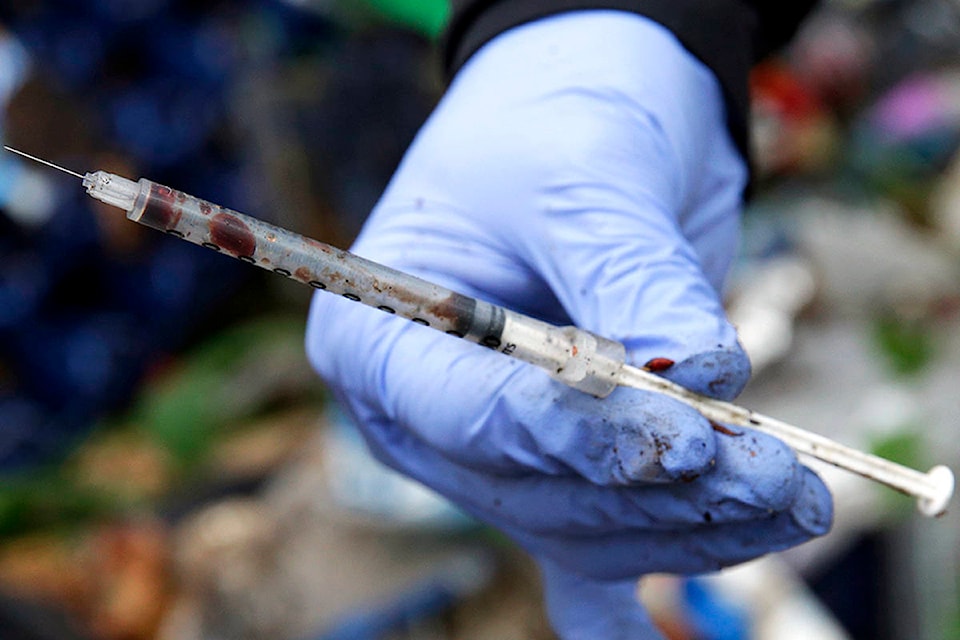After British Columbia saw its highest-ever number of overdose deaths last month, harm-reduction workers in Vernon said the city has seen a worsening of the crisis during the COVID-19 pandemic.
“We are responding to an increase of overdoses on the street but there are a variety of factors playing into the increase of overdoses,” said Alison Houweling, a harm-reduction counsellor at Cammy LaFleur Street Clinic and a member of Vernon’s Harm Reduction Team (HART).
“These factors have a lot to do with the COVID pandemic.”
The province recorded 170 fatal overdoses in May, according to BC Coroners Service data released June 11.
It’s the most deaths in a single month since the opioid crisis was declared in 2016 and a 93 per cent increase from May 2019’s totals.
“We’ve also responded to and revived more people, or we’ve heard of more people responding to overdoses with naloxone and saving them,” Houweling said.
“Those are the statistics you won’t see.”
Eighty-five per cent of all deaths in B.C. in 2020 have taken place indoors, and according to postmortem toxicology results, nearly 20 per cent of the deaths in April and May involved extreme fentanyl concentrations — compared to nine per cent the previous year.
READ MORE: B.C. records highest ever number of fatal overdoses in May with 170 deaths
READ MORE: Revelstoke has third highest rate of overdose deaths in the province
The high concentrations are concerning for Houweling, she said, and likely a knock-on effect of the pandemic and its disruption of drug supplies.
“With the border shut, there are a lot more homemade drugs,” she said.
Experts have also warned that Canada’s emergency response benefit program (CERB) — a federal support program for people affected financially by the pandemic — may have contributed to higher overdose deaths.
Houweling said there could be some truth to the idea that a sudden increase in income, combined with the effects of physical isolation, could provide circumstances for people to use higher doses of illicit drugs and more overdoses as a result.
However, she said, such overdoses are more likely to take on the street, where the HART team can reach them with life-preserving naloxone.
The more concerning demographic for Houweling is what she refers to as the hidden population: the people who are dying in private residences.
Fifty-seven per cent of the overdose deaths last month occurred in private residences, and 28 per cent in other locations such as social and supportive housing, single-room occupancy (SROs), shelters, and hotels.
“There are a lot of people who are not working and that CERB cheque that’s keeping them afloat is a lot less than what they’re used to,” Houweling said.
From Houweling’s perspective, the most positive impact would come from eliminating stigma, and encouraging the hidden population to reach out for help.
Towards mitigating this problem, the new Lifeguard Digital Health app launched last month.
The user activates the app before taking the dose. After 50 seconds, the app will sound an alarm. After 75 seconds a text-to-voice call will go straight to 911, alerting emergency medical dispatchers of a potential overdose, with anonymity kept intact.
Houweling said the app hasn’t been as relevant in her work with street-entrenched people, who often don’t have a cellphone. But she said the app could be a massive benefit to those who are housed and have a phone.
To get naloxone kits, naloxone training, harm reduction supplies and information visit the Cammy LaFleur clinic at 2800 33rd Street in Vernon, Monday to Friday from 1-3 p.m, or call 250-938-3518.
